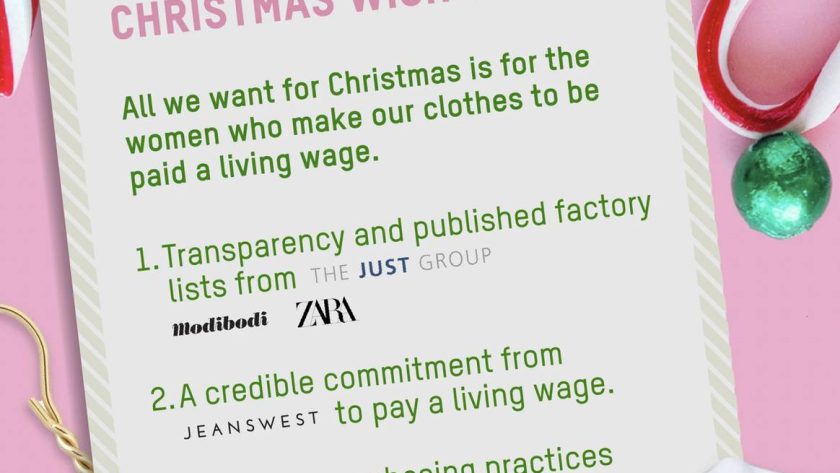According to a recent poll by charity retailer Oxfam Australia, consumers do not trust the claims that Australian fashion brands are making in regards to the treatment of overseas garment workers in their supply chains. This comes as no surprise with the industry recording a staggering two billion dollars in expected profits on one hand and Bangladeshi garment workers campaigning for a living wage on the other.
The poll found that more than 80 percent of Australian apparel shoppers agree that clothing brands should be more transparent about how much they pay and how they treat garment workers along their supply chain.
Almost three fourth (71 percent) of Australian apparel shoppers think that clothing brands in Australia exaggerate or mislead consumers (intentionally or unintentionally) about how overseas garment workers in their supply chain are treated.
Consumers willing to pay more for living wages
A good three fourth of them (76 percent) said that they would be willing to pay more for clothes if they knew that the money would go towards paying living wages for the garment workers.
On average, Australian consumers think that 17 percent of the cost of a typical clothing item should go towards the garment worker who makes it as part of their wage, with the statement not elaborating how consumers may have arrived at that figure. Previous research found that on average, only 4 percent of the cost of the garment goes towards the worker.
As consumers worldwide have started their holiday shopping, Oxfam Australia has come up with its own Christmas Wish List that asks brands to step up their game when it comes to guaranteeing a living wage.
How brands can improve
Three measures are key for all brands: Increasing transparency by publishing factory lists (Oxfam is calling on The Just Group, Modibodi and Zara in particular), a credible commitment to pay a living wage (Jeans West) and improved purchasing practices (Best & Less, Jeans West and Uniqlo).
“This polling is evidence of what we have long known – that ethical considerations are increasingly a significant factor in consumers’ purchasing decisions. That’s why taking action now is not only in the interest of workers, but in the interest of these companies’ bottom lines,” commented Oxfam Australia chief executive Lyn Morgain in a statement.
“Ultimately, brands hold the power and responsibility to ensure better lives for the workers who make their clothes – including by paying a living wage – yet they are still falling short. Oxfam’s call for transparency and urgent action echoes the sentiments of concerned consumers, who want to support garment workers in their efforts to break free from the cycle of poverty. We are united in our demands and envision a future where fashion is fair,” added Morgain.
Earlier in the month, the Bangladeshi government announced the new minimum wage for garment workers, which is 12,500 taka (around 114 US dollars) from December 2023 instead of the previous 8,000 taka (68 US dollars). Despite this increase by 56 percent, Bangladesh remains of the bottom when it comes to minium wages paid in garment-producing countries like Cambodia, China, India and Vietnam.
Garment workers in Bangladesh had thus demanded 23,000 taka (209 US dollars) to be able to make ends meet and cover their basic living costs like food, school expenses, rent and medicines.



